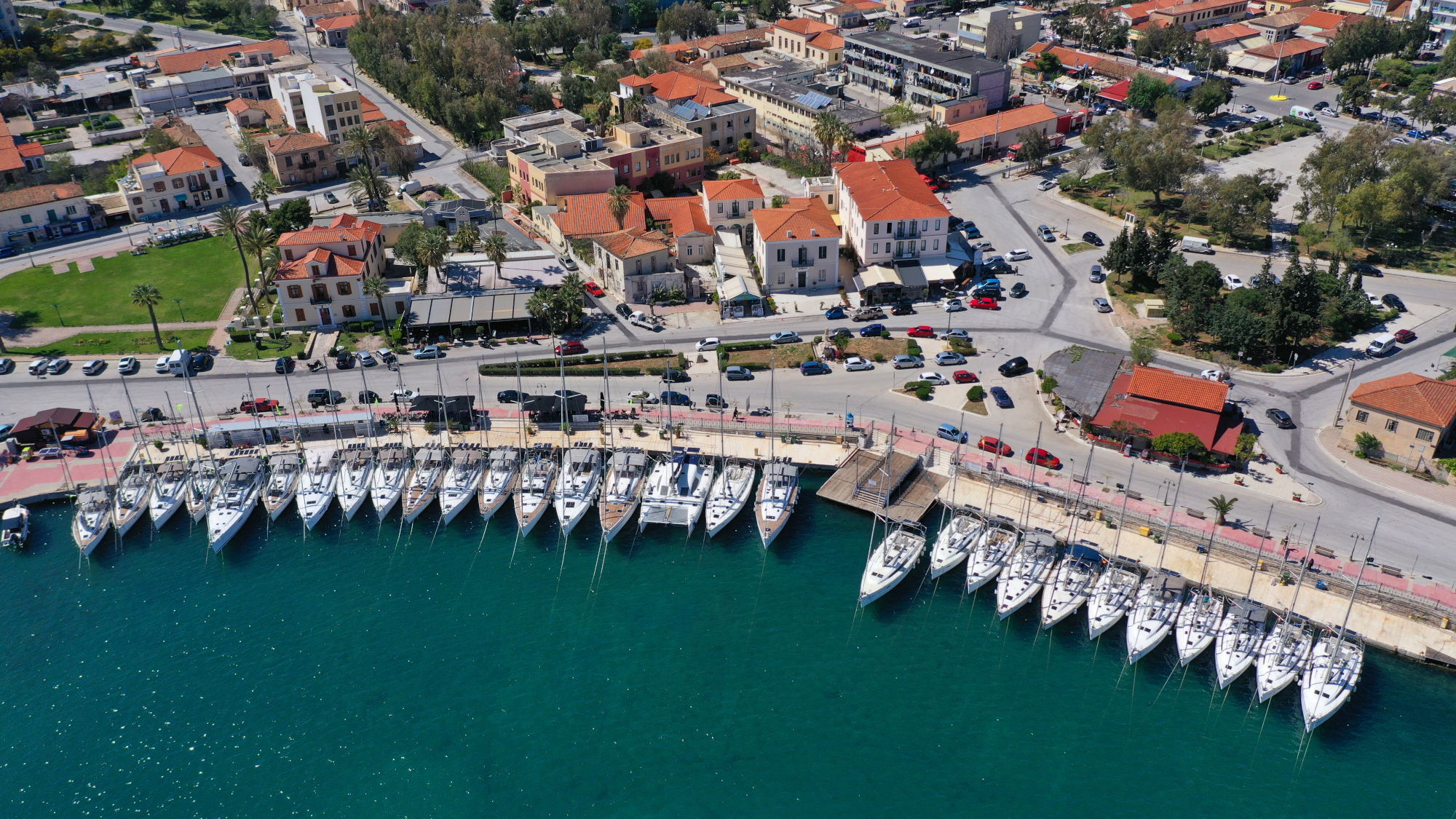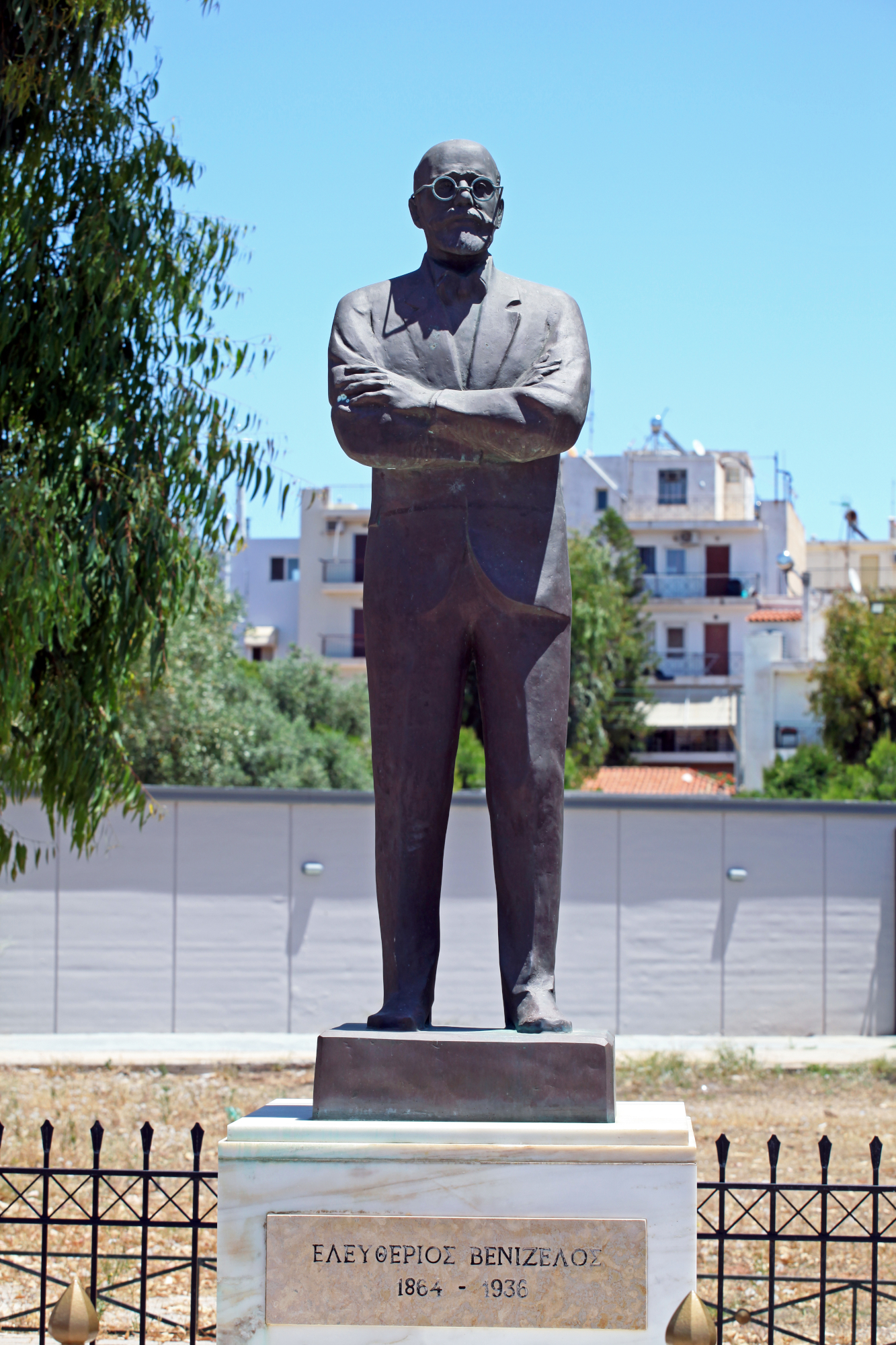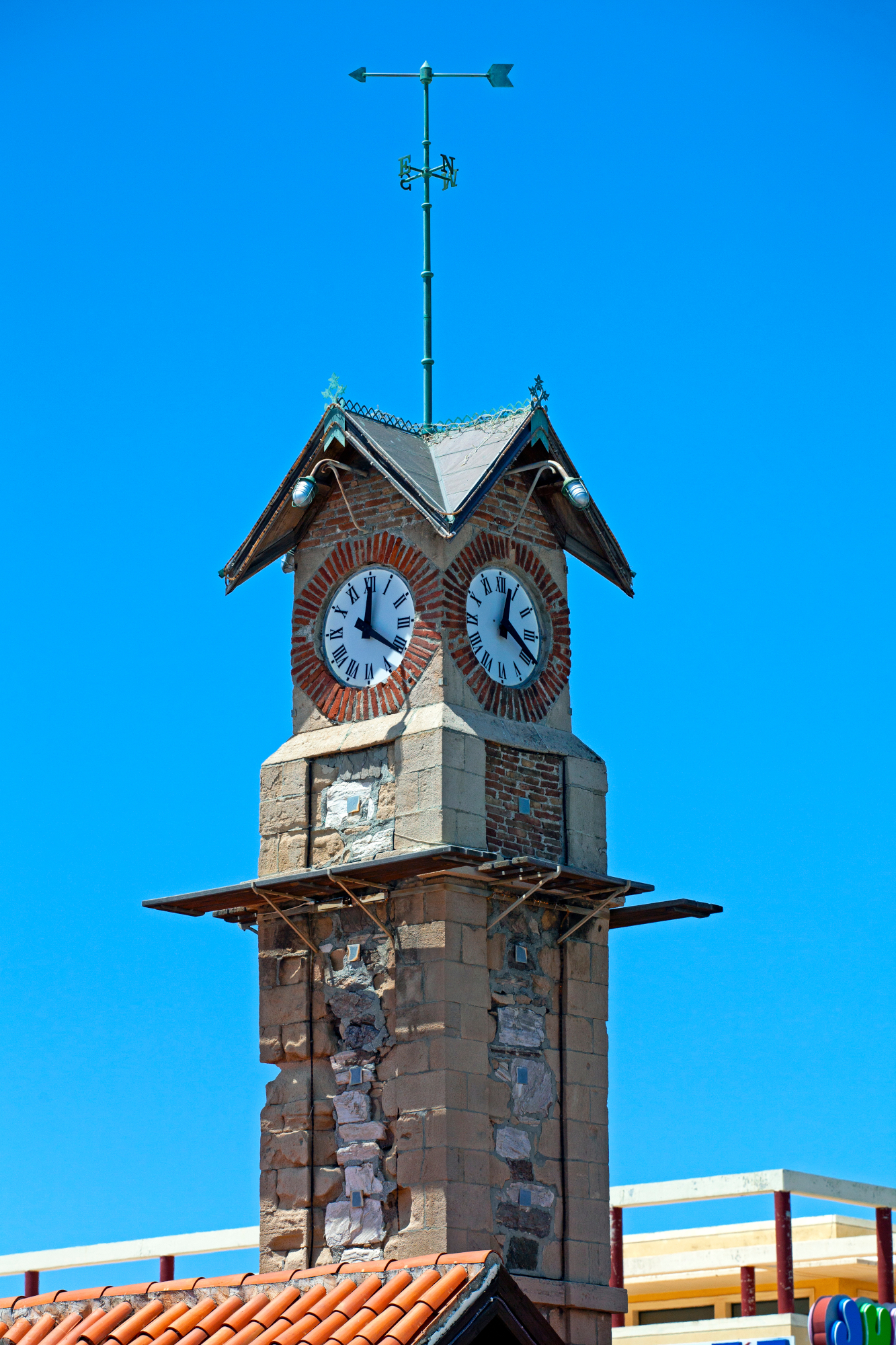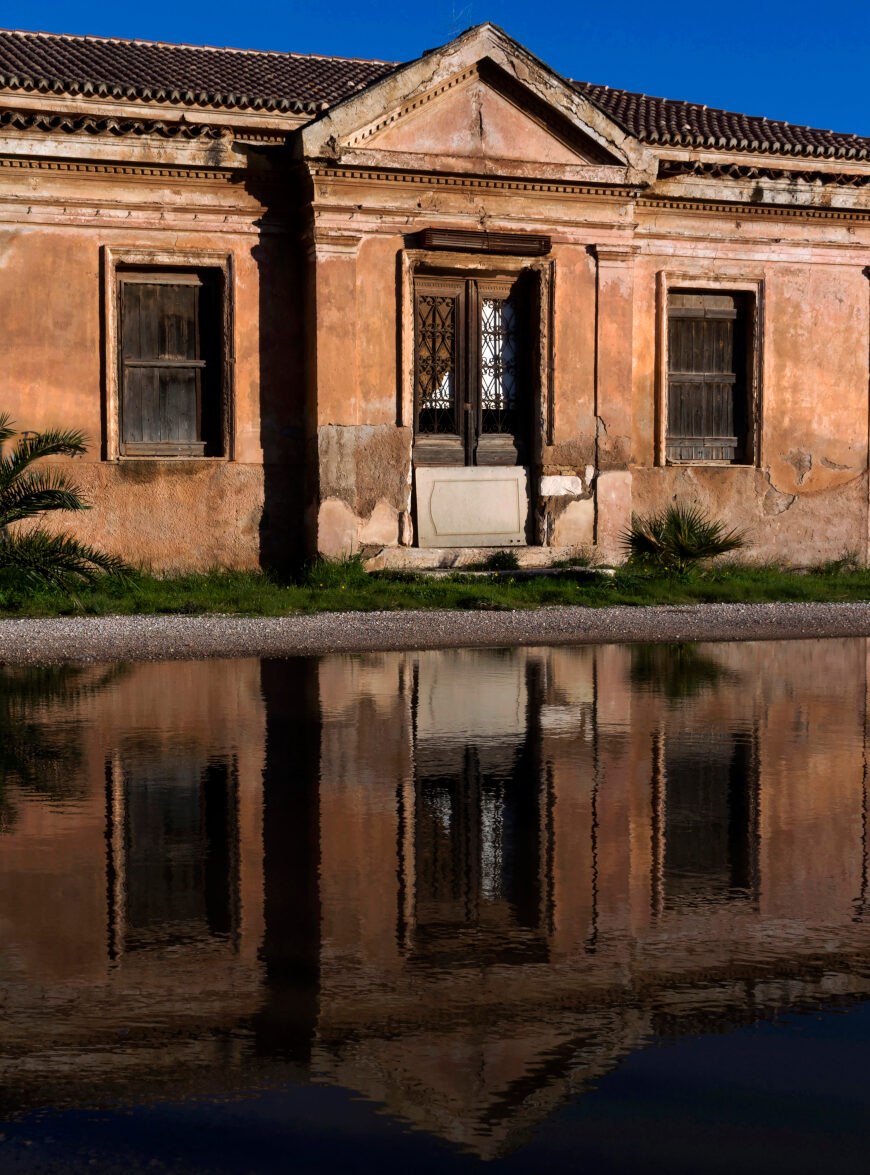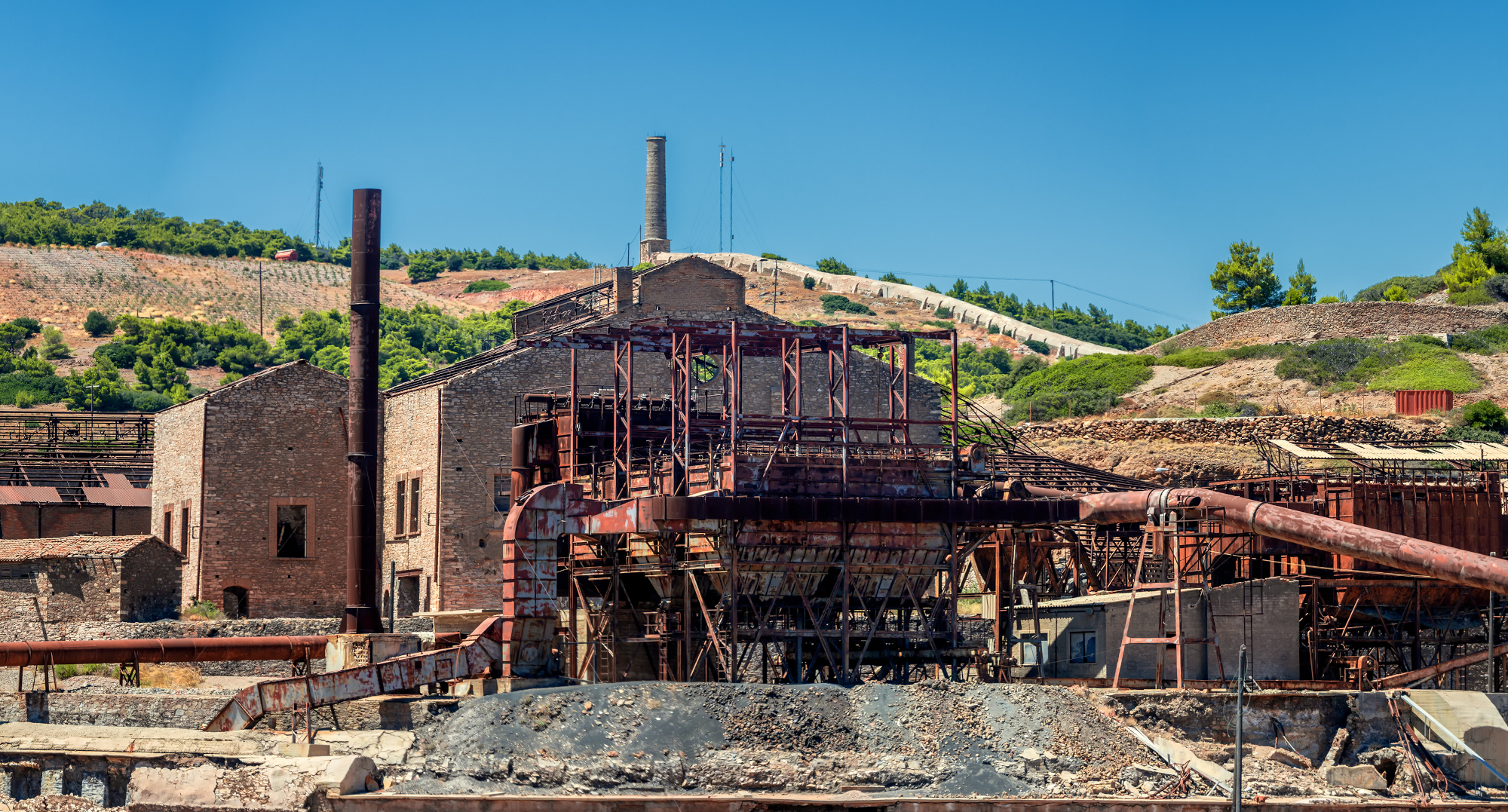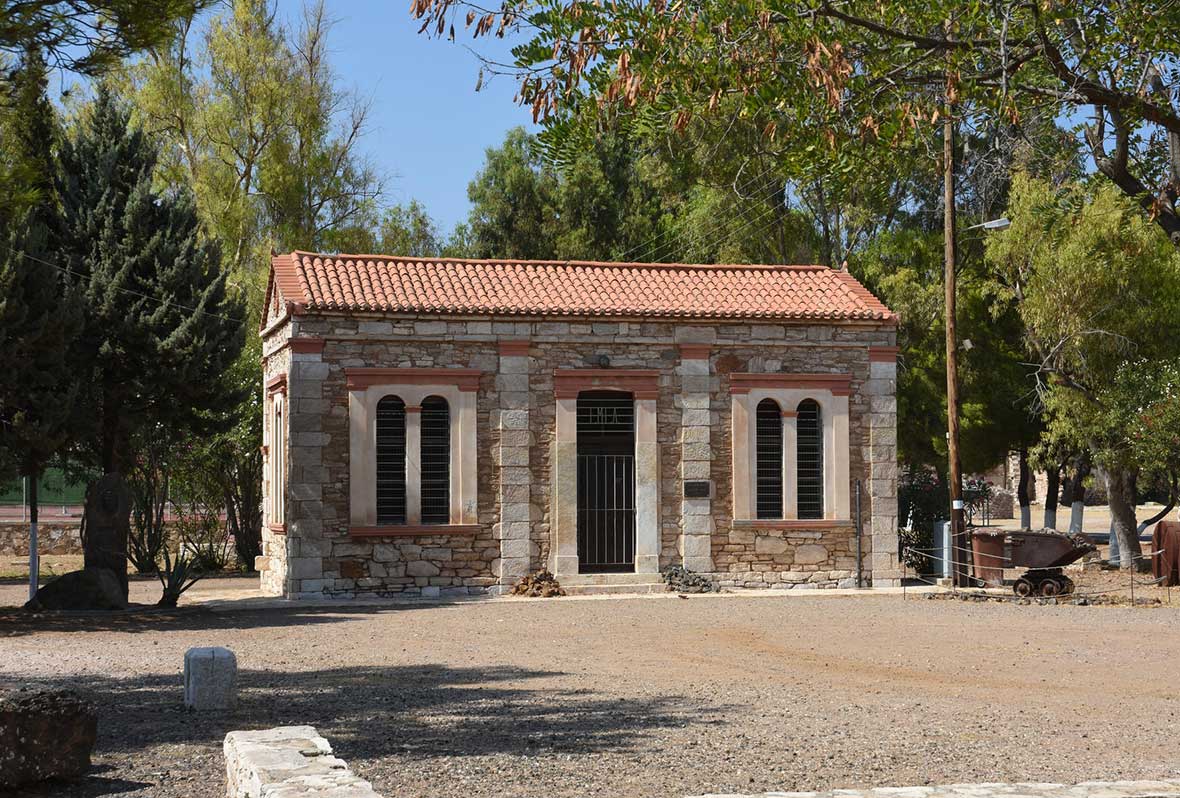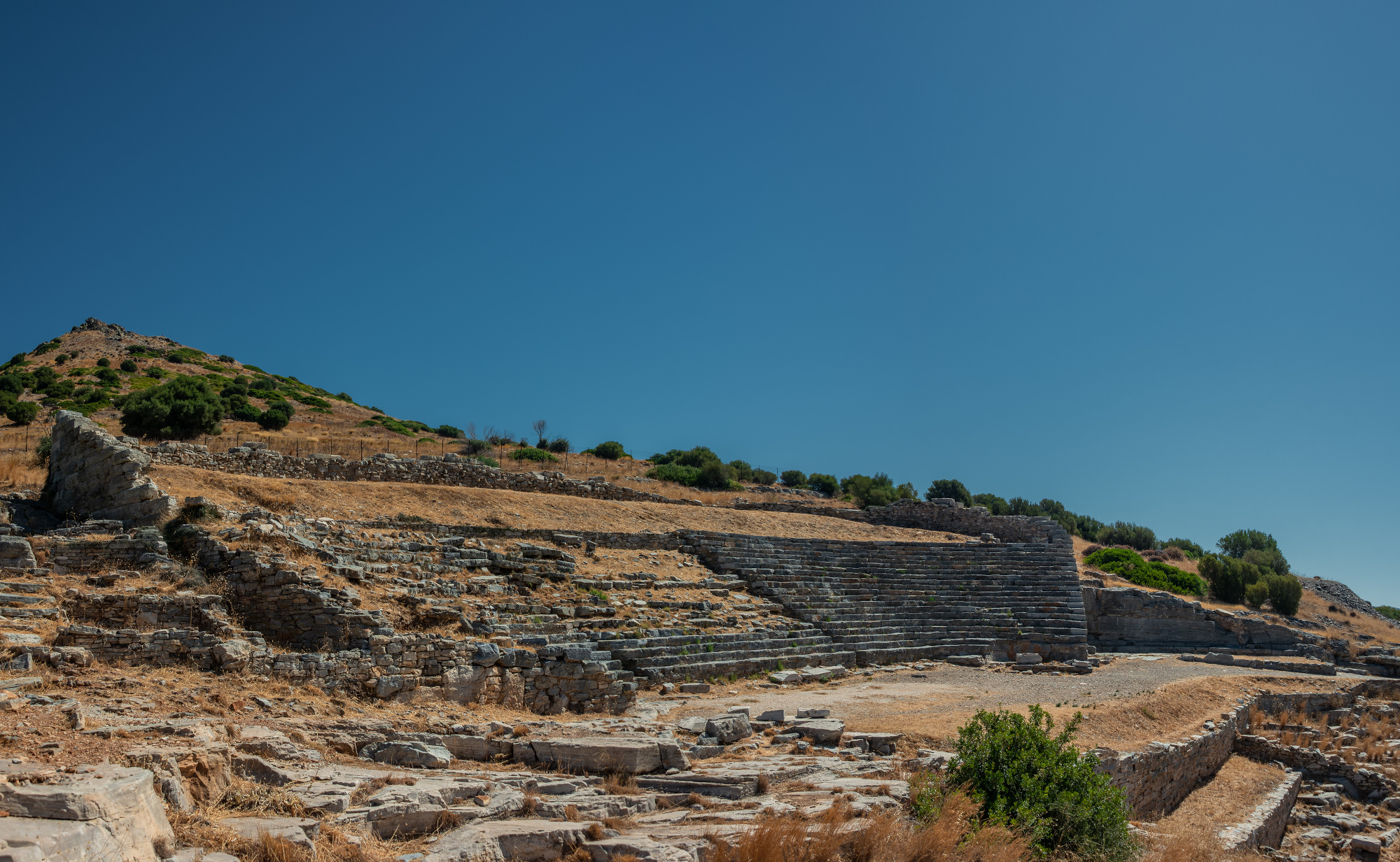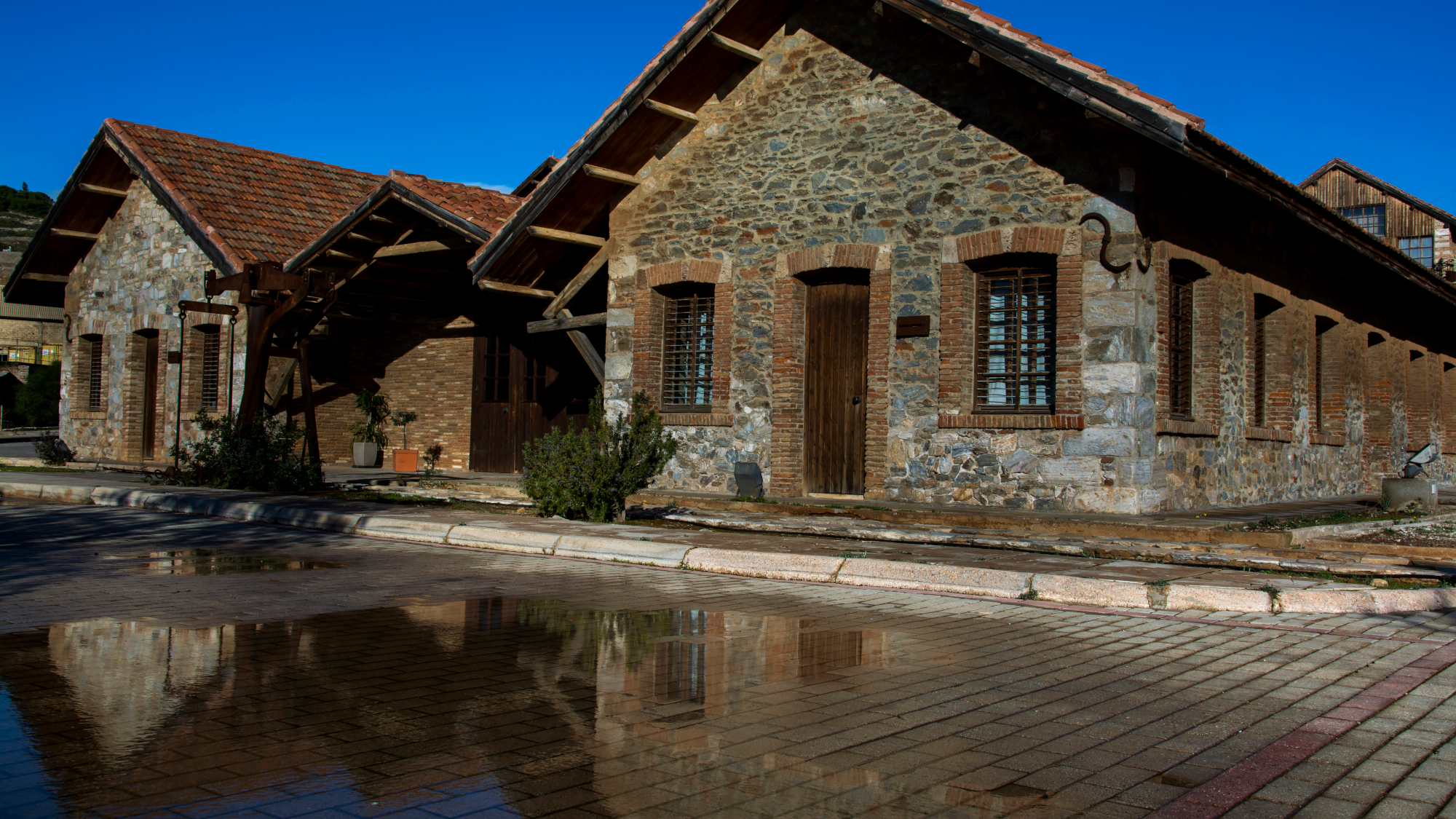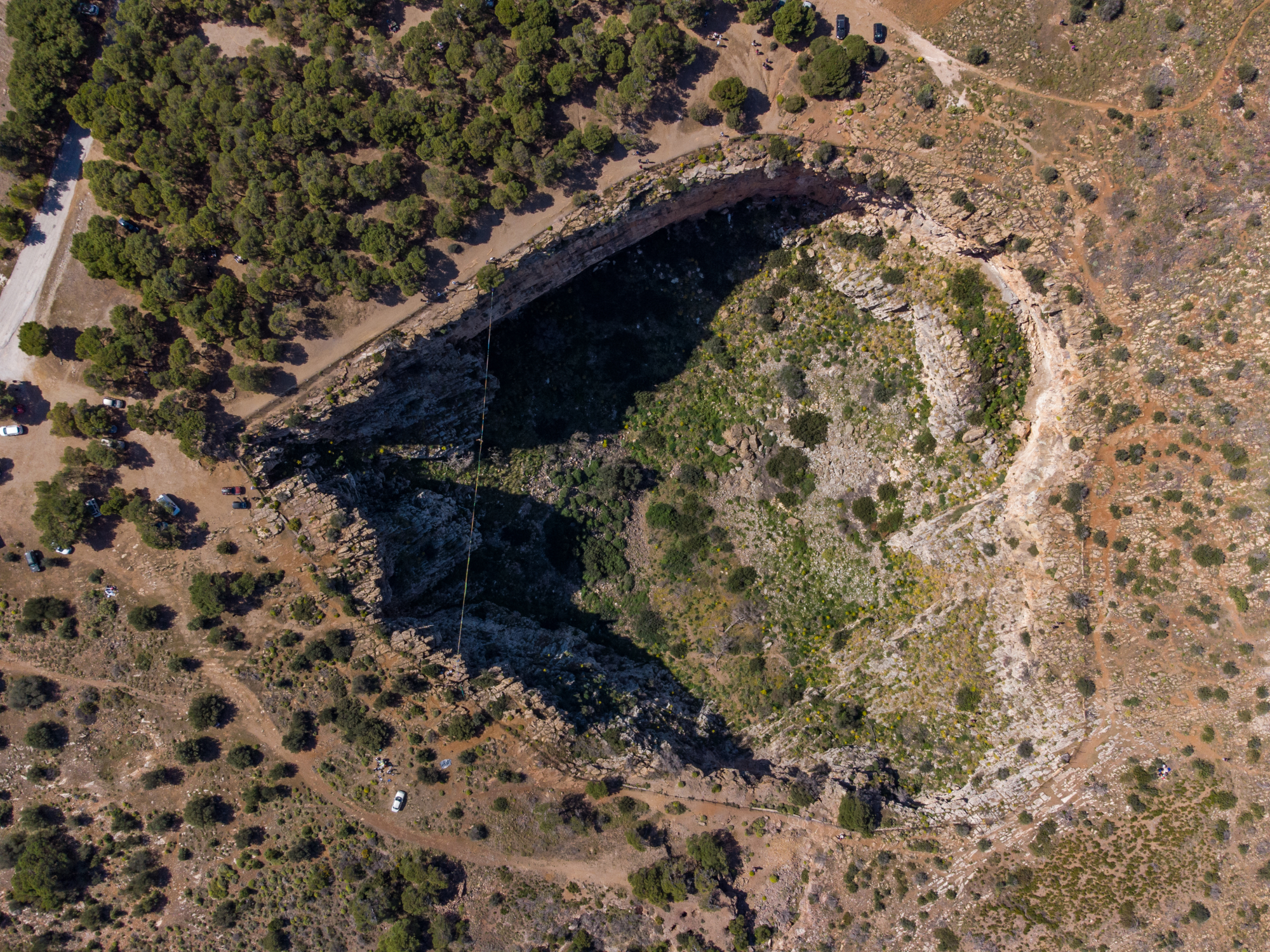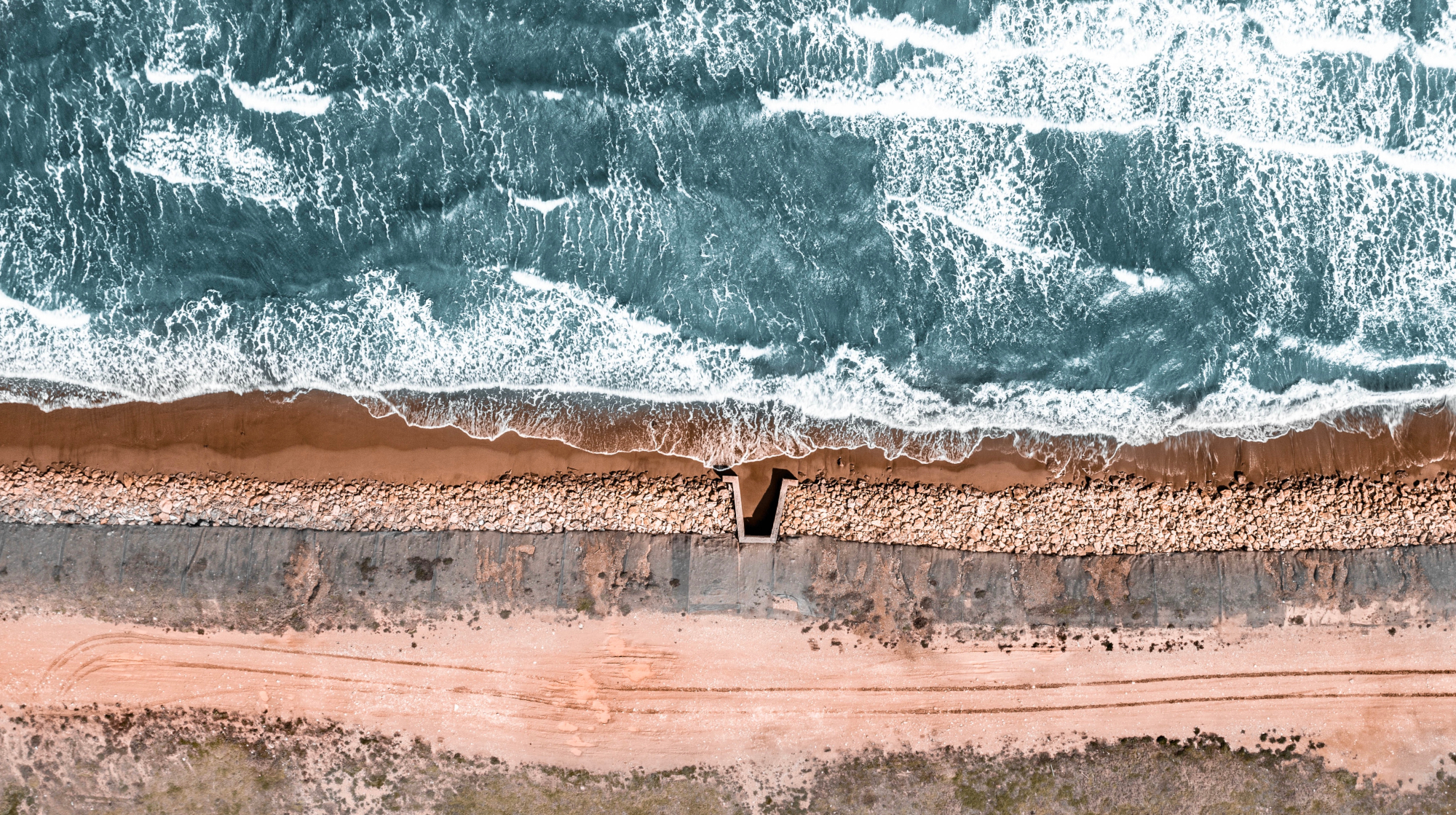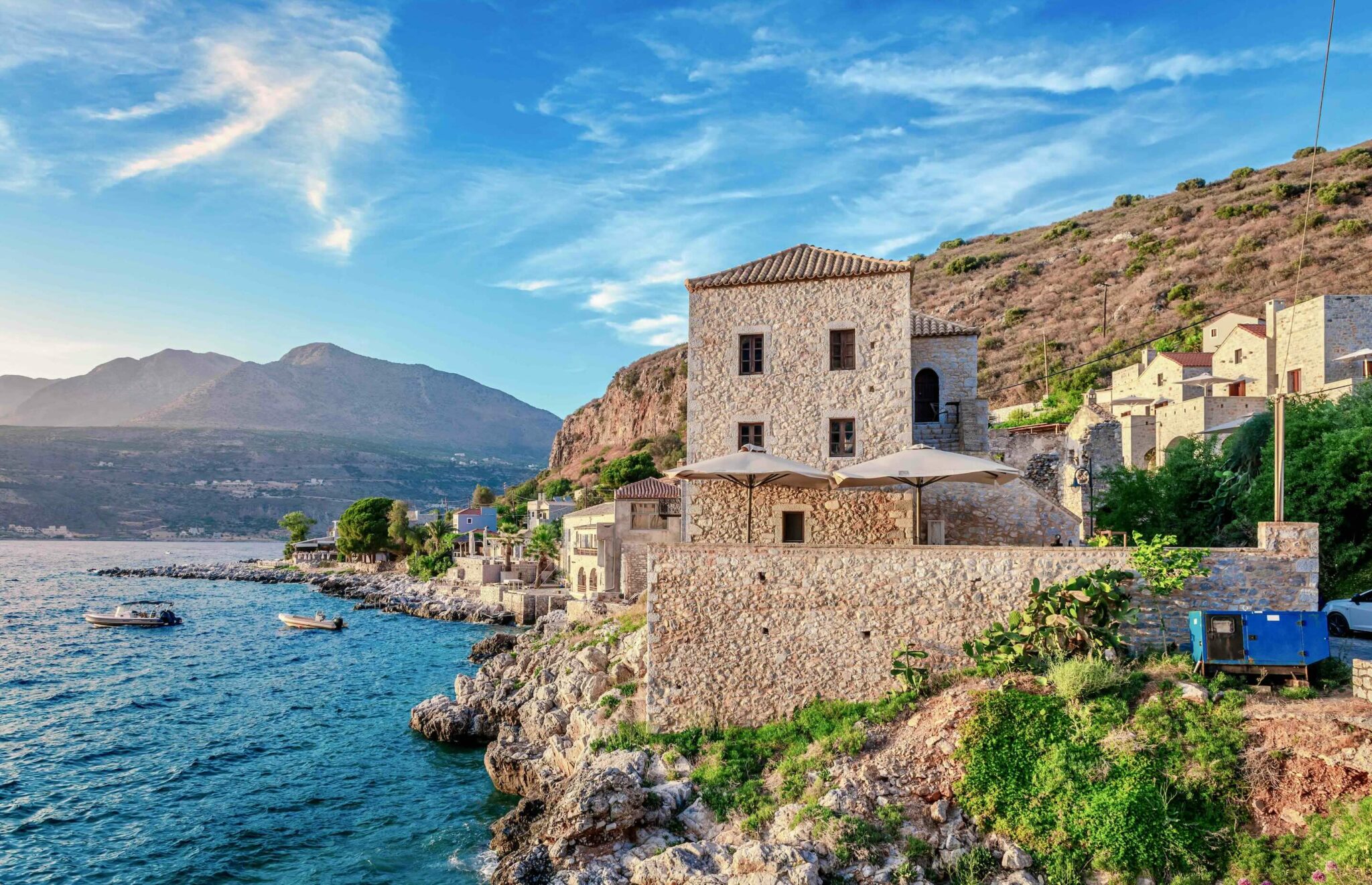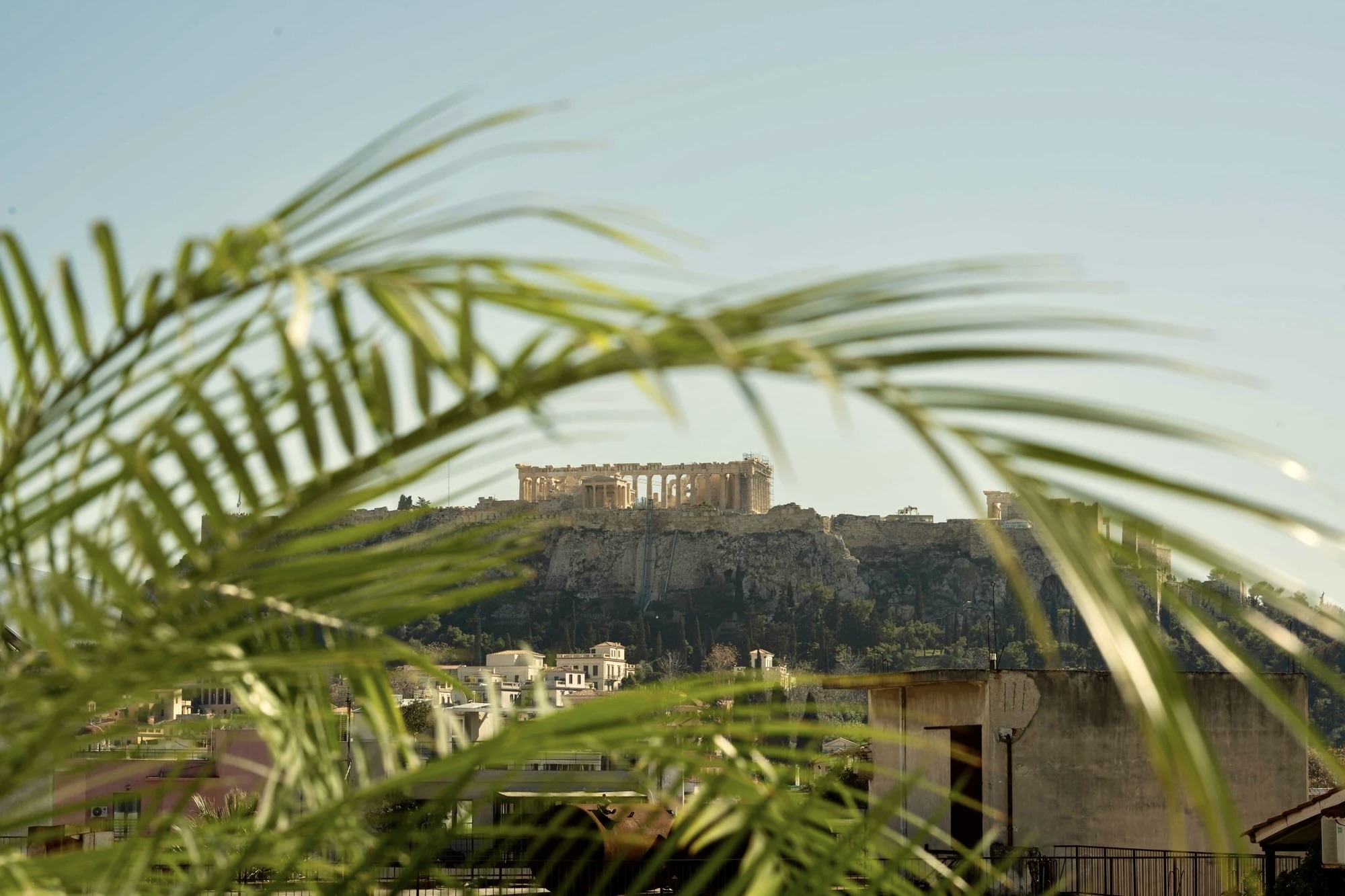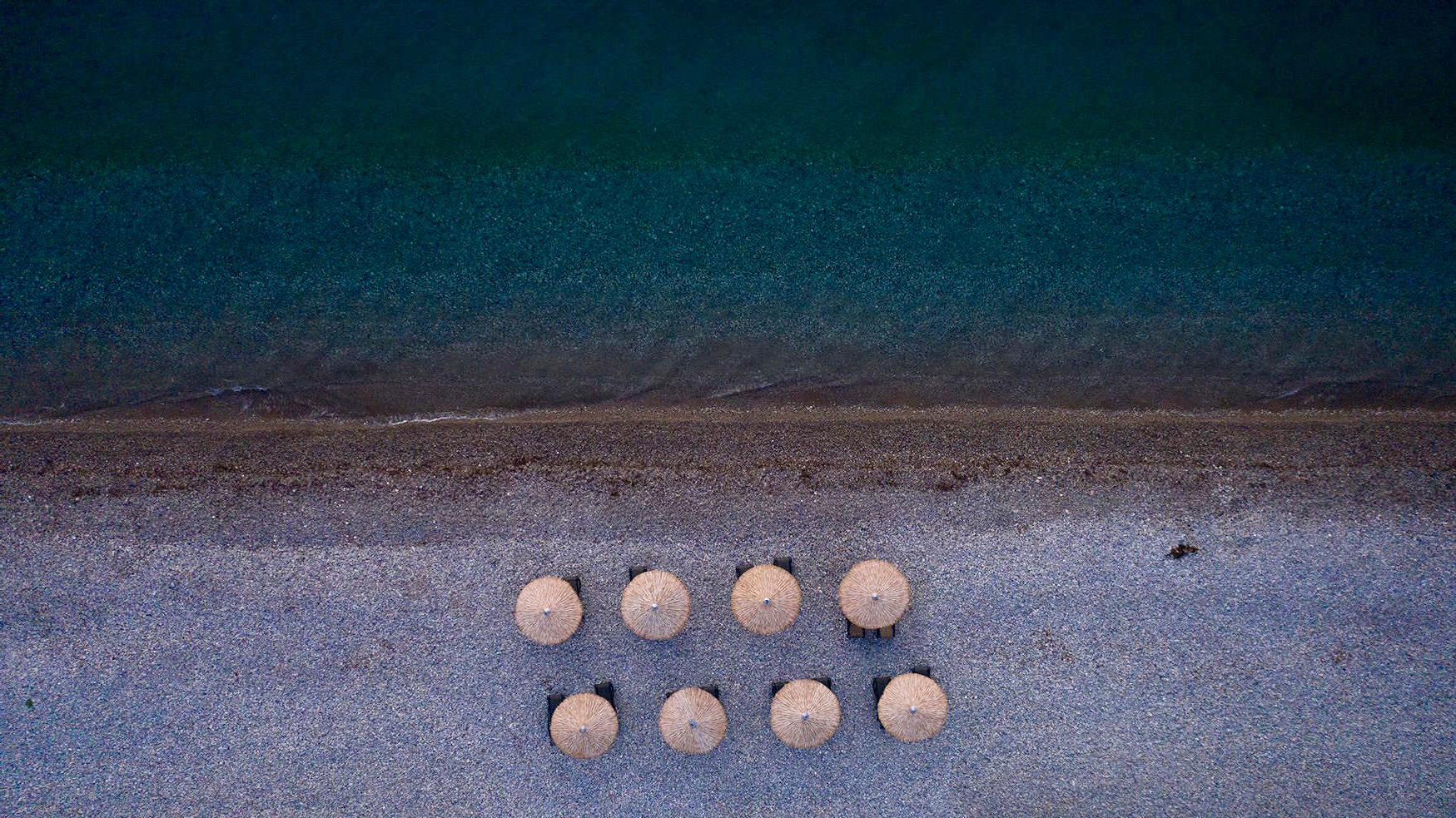As if in an open-air museum, in Lavrio wherever you turn your gaze you’ll see traces of the town’s mining history.
Boasting the only ISO 9001:2000 yacht marina with a blue flag, the third largest port in Attica, from where many ships depart for the Cyclades and the islands of the eastern Aegean, and just a few minutes away from the Temple of Poseidon in Sounion, Lavrio is an emblematic landmark in the Attica region.
What to see
The old French ore loader in the port, the clock tower of the Hellenic Metallurgical Company, the factory of the French Company that today houses the Lavrion Technological and Cultural Park, the beautiful neoclassical buildings scattered in the narrow streets of the town, built mainly by the mining companies, and the first working-class houses in the Kyprianos district.
A brief historical review
The history of Lavrio begins many years ago, around 3,000 BC, when the ancient Greeks began to mine the silver and lead ores that existed in the area. In the 2nd century BC their operation ceased and resumed several centuries later, in 1864 with the foundation of the company “Roux – Serpieri – Fressynet C.E.” by the Italian Gianbatista Serpieri after the prompting of the metallurgist Andreas Kordellas. After 1869, the Lavrion Metallurgical Company was founded, which together with the Serpieri Company began to shape the town of Lavrio. The Companies built shops, schools and houses for the mine workers. Lavrio’s industrial history ends in 1977 as a consequence of the de-industrialization of the country. The facilities were shut down in 1989.
Lavrio today
Lavrio, together with Piraeus adn Rafina, is one of the three ports of Attica. Many ships to some of the Cyclades islands, the northeastern Aegean and Kavala depart from here on a daily basis. Moreover, the town’s marina can accommodate sundry vessels, while several yacht rental companies operate in the area as Lavrion is an excellent departure point for sea excursions.
Discover Lavrio on foot and marvel at the many magnificent neoclassical buildings such as the first primary school, built in 1901, the old Town Hall in the main square, the two-storey building that originally operated as a hotel called “Agglia” (England), as well as the new one, housed in a 1864 building, which was the former residence of the director of “Roux – Serpieri -Fressynet C.E.” company. Stop by the Archaeological Museum, a typical example of ’70s architecture featuring exhibits from the mining and metallurgical activity in the area during antiquity, as well as vessels,tools and stone jewellery from the Kitsos cave, funeral gifts from the cemeteries of Thorikos and the wider area of Sounion etc.
Just a few blocks away, housed in a beautiful 1873 building that once belonged to the industrial complex of the Hellenic Company’s ore washeries, the small Mineralogical Museum of Lavrion and its special mineral collection are worth your attention. At the town’s entrance (the one on the side of Mesogeia) lies the complex of the French Company, an excellent example of industrial architecture of the era, which today houses the Lavrio Technological and Cultural Park. There, you can also visit the Handicraft-Industrial-Educational Museum, where, upon request, you can participate in the program Memories of the Historical French Mining Company of Lavrio and take a tour of the (outside) Park’s facilities. Kyprianos, a quarter built by the French Company for the accommodation of their employees in the 19th century, as well as the Palm Tree Forest right in front of it, also created by the same company, are located in this same area.
The wider area is also very interesting, hence do not just stay in the centre of Lavrio. You may visit the archaeological site of Thorikos on Velatouri Hill, a bit outside the city. It is one of the of the oldest settlements in Attica, which was a metal processing centre during the 5th and 4th centuries BC.
At the top of the hill, stand the remains of the acropolis with findings from the Neolithic to the Middle Helladic period and five vaulted chamber tombs from the Late Helladic (Mycenaean) period (1600-1100 BC). The ancient theatre of Thorikos is also found in the area, which is considered the oldest in Greece. Constructed at the end of the 6th century BC, it is also considered very unique by virtue of its peculiar ellipsoidal shape.
It’s worth visiting the ore washeries and the ancient mines of Lavrio (the site can be visited upon consultation with the Archaeological Museum of Lavrion). Near the settlement of Agios Konstantinos lies the Mineralogical Museum of Kamariza, as well as the 165 metres deep Serpieri mine, built by the French Mining Company of Lavrion in 1880. On the site one can still see the lifting tower and remains of the facilities, but for the moment both the site and the museum are closed due to restoration works.
If the weather permits, you may also go for a swim in one of the many wonderful beaches of Lavreotiki, such as Punta Zeza, Poseidonia, Asimaki, Thorikos, Agia Marina and many many more. A visit to one of the local taverns for freshly grilled or fried fish against the backdrop of the authentic marble slabs on which fishermen sell their wares is a must.
Attica is a safe and attractive multidimensional destination offering visitors unforgettable experiences throughout the year and Lavrio is one of the region’s well-hidden gems. Summer or winter, Lavreotiki is an excellent destination full of secrets waiting to be discovered.



